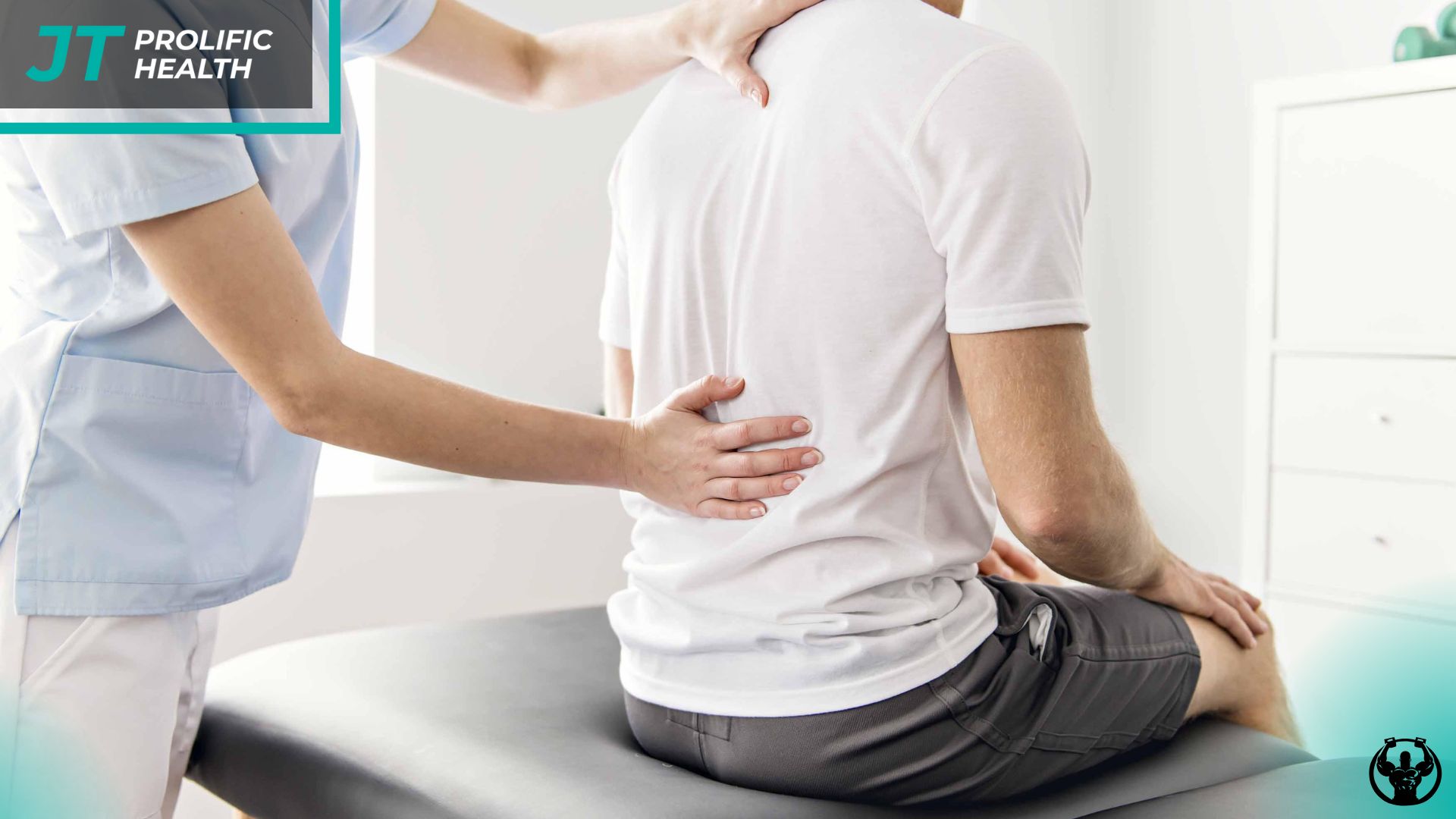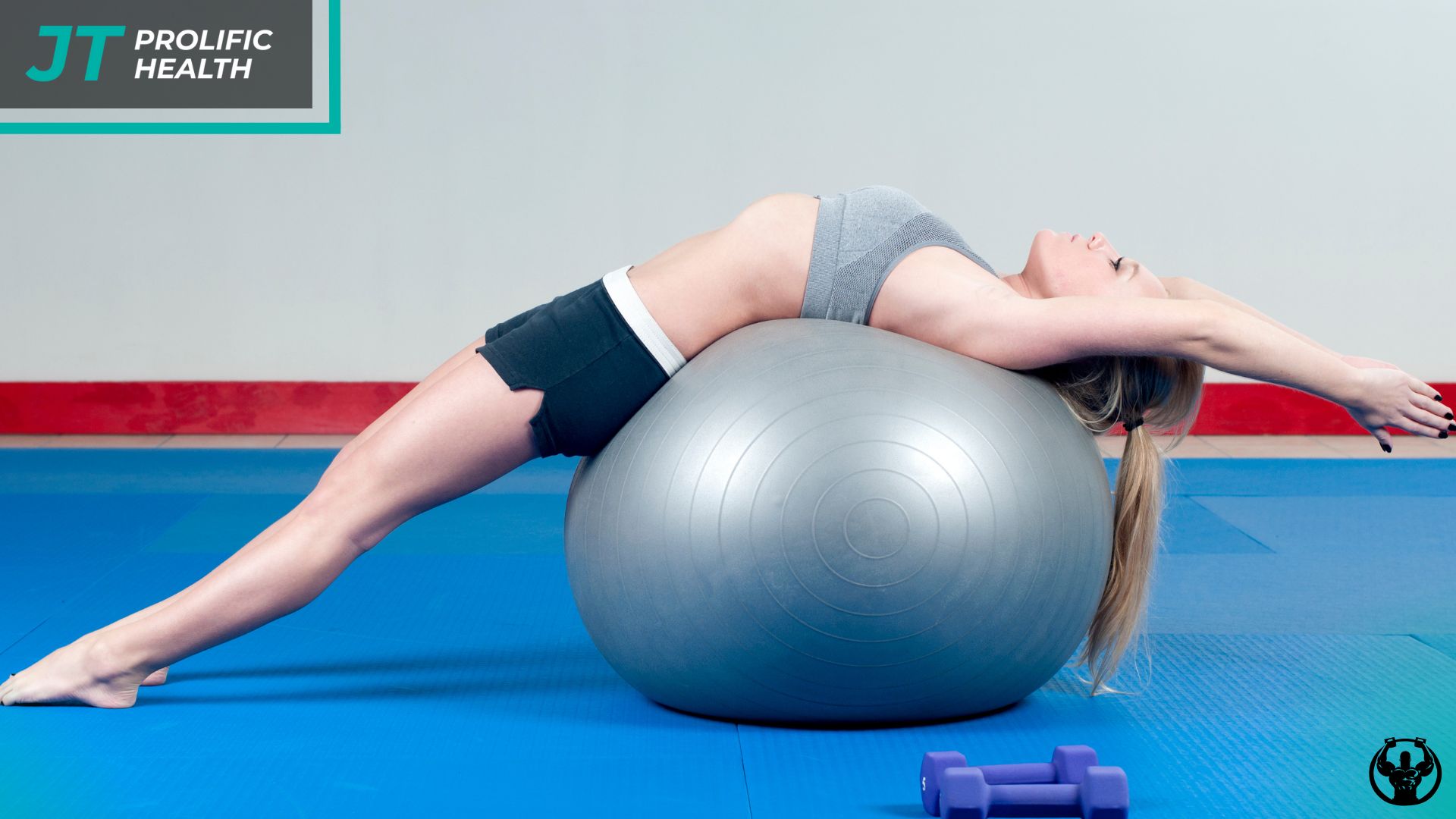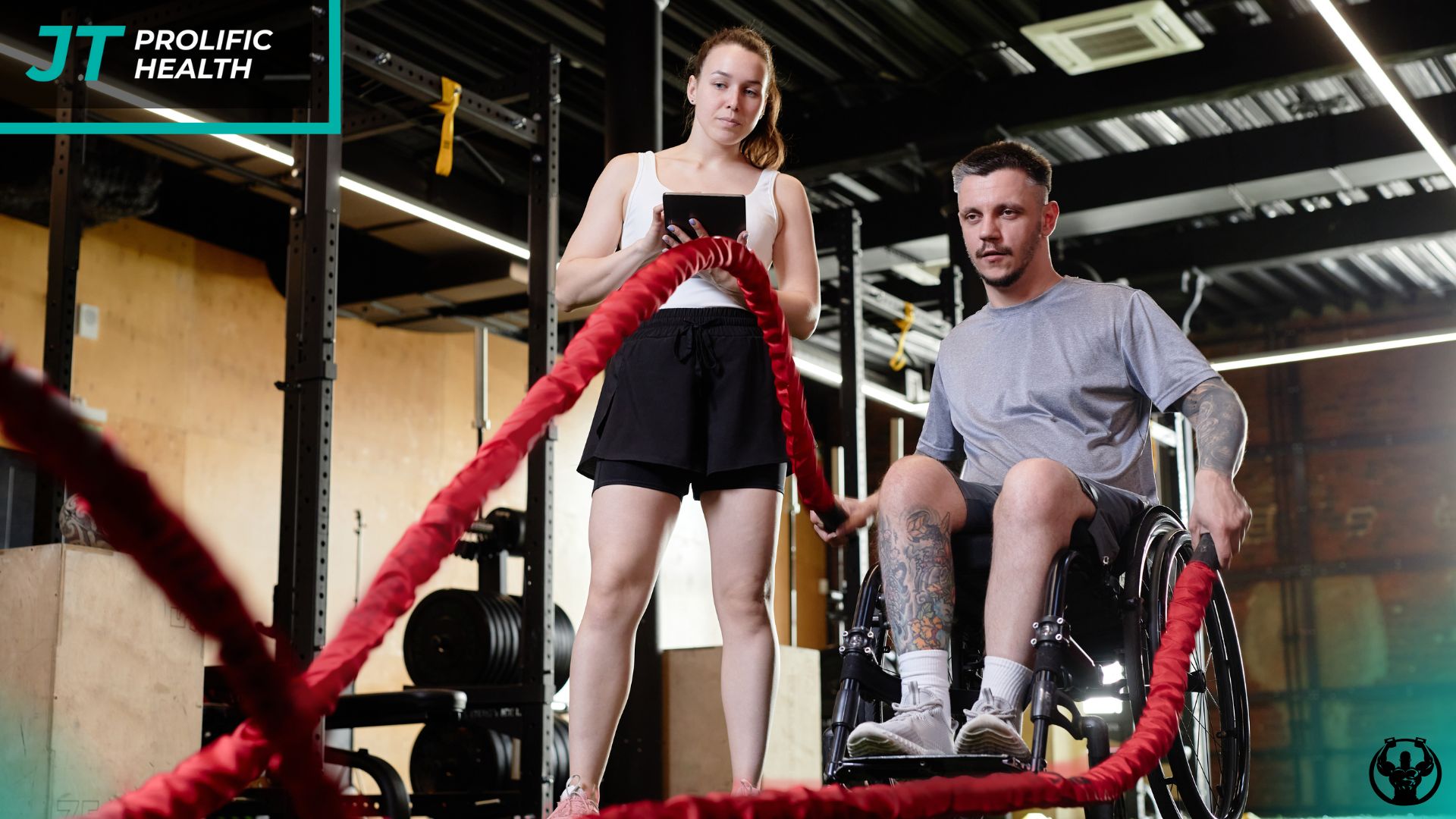Living with chronic pain can feel like an endless cycle of discomfort that limits your daily activities and diminishes your quality of life. Whether you’re dealing with arthritis, fibromyalgia, lower back pain, or other persistent conditions, the idea of exercising might seem counterintuitive or even intimidating. However, research consistently shows that appropriate physical activity is one of the most effective tools for managing chronic pain and improving overall well-being.
The beauty of home-based exercise lies in its accessibility and adaptability. You don’t need expensive equipment or gym memberships to begin your journey toward better pain management. Your living room can become a sanctuary for healing movement, where you can work at your own pace, listen to your body’s signals, and gradually build strength and flexibility without the pressure of external expectations.
Chronic pain affects millions of people worldwide, with studies indicating that approximately 20% of adults experience persistent pain that interferes with their daily lives. The traditional approach of rest and medication, while sometimes necessary, often falls short of providing long-term relief. Modern pain science has revealed that gentle, consistent movement can actually help retrain your nervous system, reduce inflammation, and improve your body’s natural pain-fighting mechanisms.
Understanding the relationship between movement and pain is crucial for developing an effective home exercise routine. When you experience chronic pain, your body often develops protective patterns that can lead to muscle weakness, joint stiffness, and decreased mobility. These compensatory behaviors, while initially protective, can actually perpetuate the pain cycle over time. By introducing carefully planned exercises, you can begin to break this cycle and restore more natural movement patterns.
The key to successful pain management through exercise lies in starting slowly and progressing gradually. This approach allows your body to adapt without triggering pain flares, building confidence alongside physical improvements. Your home environment provides the perfect setting for this gentle progression, offering privacy, comfort, and the ability to modify activities based on how you’re feeling each day.
Key Takeaways
- Start with low-impact activities: Begin your exercise routine with gentle movements like stretching, walking in place, or basic yoga poses. These activities help improve circulation and flexibility without placing excessive stress on painful joints or muscles.
- Consistency trumps intensity: Regular, moderate exercise performed daily or several times per week is more beneficial than sporadic intense workouts. Even 10-15 minutes of gentle movement can provide significant pain relief benefits when done consistently.
- Listen to your body’s signals: Learn to distinguish between the discomfort of gentle stretching and pain that indicates potential harm. Good pain feels like a mild stretch or muscle fatigue, while bad pain is sharp, sudden, or significantly worsens your existing symptoms.
- Create a pain-friendly environment: Set up your exercise space with supportive surfaces, proper lighting, and easy access to props like pillows, towels, or resistance bands. Having everything readily available reduces barriers to consistent practice.
- Focus on functional movements: Prioritize exercises that improve your ability to perform daily activities like reaching, bending, lifting, and walking. These functional improvements translate directly into better quality of life and reduced pain interference.
- Incorporate stress reduction techniques: Combine physical exercises with breathing techniques, meditation, or mindfulness practices. Stress and pain are closely connected, and addressing both simultaneously can amplify your results.
- Track your progress and patterns: Keep a simple log of your exercises, pain levels, and how you feel afterward. This information helps you identify which activities are most beneficial and allows you to adjust your routine accordingly.
Understanding Chronic Pain and Exercise Benefits

Chronic pain is a complex condition that involves not just physical sensations but also emotional and psychological components. Unlike acute pain, which serves as a protective warning signal, chronic pain persists beyond the normal healing time and can become a condition in itself. This type of pain often involves changes in how your nervous system processes pain signals, making you more sensitive to stimuli that wouldn’t normally cause discomfort.
Exercise works as a natural pain reliever through several mechanisms. Physical activity stimulates the release of endorphins, your body’s natural painkillers, which can provide both immediate and long-term relief. Additionally, regular movement helps reduce inflammation throughout your body, improves blood flow to affected areas, and strengthens the muscles that support your joints and spine.
The psychological benefits of exercise are equally important for pain management. Physical activity has been shown to reduce anxiety and depression, both of which commonly accompany chronic pain conditions. When you engage in regular exercise, you’re also building self-efficacy – the belief in your ability to manage your condition effectively. This psychological shift can be just as powerful as the physical benefits in reducing pain perception.
For those seeking professional guidance in developing an exercise routine, working with qualified fitness professionals can provide valuable support in creating a safe and effective program tailored to your specific needs and limitations.
Research has consistently demonstrated that people with chronic pain who engage in regular, appropriate exercise experience significant improvements in pain levels, physical function, and overall quality of life. These benefits often surpass those achieved through medication alone, making exercise a cornerstone of comprehensive pain management strategies.
Low-Impact Exercises for Pain Relief


Low-impact exercises form the foundation of any effective home-based pain management program. These activities provide the benefits of movement while minimizing stress on your joints, muscles, and other potentially sensitive areas. The beauty of low-impact exercise lies in its adaptability – you can modify intensity, duration, and complexity based on your current pain levels and physical capabilities.
Water-based exercises, even if performed in a bathtub or small inflatable pool, can provide exceptional pain relief. The buoyancy of water supports your body weight, reducing pressure on joints while the resistance helps strengthen muscles. Simple movements like gentle leg lifts, arm circles, or walking in place while seated in warm water can provide significant benefits. The warmth also helps relax tense muscles and improve circulation.
Chair-based exercises offer another excellent option for those with mobility limitations or severe pain flares. These routines can include seated marching, shoulder rolls, gentle twists, and arm reaches. Chair exercises allow you to maintain an exercise routine even on your most challenging days, ensuring consistency in your pain management approach.
Stretching and flexibility exercises should be a daily component of your routine. Focus on gentle, sustained stretches that target areas commonly affected by chronic pain, such as the neck, shoulders, lower back, and hips. Hold each stretch for 15-30 seconds, breathing deeply and never forcing the movement beyond comfortable limits. Regular stretching helps maintain joint mobility and can prevent the stiffness that often accompanies chronic pain conditions.
Balance exercises, while often overlooked, play a crucial role in pain management. Chronic pain can affect your proprioception – your body’s awareness of its position in space – leading to increased fall risk and compensatory movement patterns. Simple balance exercises like standing on one foot, heel-to-toe walking, or gentle weight shifts can help retrain your balance system and improve overall stability.
For those interested in exploring bodyweight exercise approaches, modified calisthenics can be adapted for pain management, focusing on gentle, controlled movements that build strength progressively.
Strength Training Adaptations for Chronic Pain


Strength training might seem daunting when you’re dealing with chronic pain, but it’s actually one of the most effective interventions for long-term pain management. The key lies in adapting traditional strength training principles to accommodate your current limitations while progressively building the muscular support your body needs to function optimally.
Start with isometric exercises, which involve contracting muscles without moving joints. These exercises are particularly beneficial because they can be performed at any intensity level and don’t require equipment. Examples include wall sits, planks (modified as needed), and glute squeezes. Isometric exercises help build strength while minimizing joint stress, making them ideal for people with arthritis or joint-related pain conditions.
Resistance bands offer an excellent tool for progressive strength training at home. Unlike free weights, bands provide variable resistance that increases as you stretch them, allowing for a more controlled and joint-friendly workout. You can easily adjust the intensity by changing your grip position or using bands with different resistance levels. Focus on slow, controlled movements that emphasize both the lifting and lowering phases of each exercise.
Core strengthening deserves special attention in any chronic pain management program, particularly for those with back pain. A strong core provides essential support for your spine and can significantly reduce pain and prevent future episodes. Start with gentle exercises like pelvic tilts, modified dead bugs, and supported bridges. These exercises can be performed on a bed or cushioned surface for added comfort.
The concept of “graded exposure” is crucial in strength training for chronic pain. This approach involves gradually increasing exercise demands while monitoring your body’s response. Start with exercises you can perform comfortably for 8-12 repetitions, then slowly progress by adding repetitions, resistance, or range of motion over several weeks. This methodical approach helps build confidence while avoiding pain flares.
For comprehensive guidance on developing safe and effective strength training routines, consider exploring professional strength training approaches that can be adapted for home use and chronic pain management.
Remember that strength training for chronic pain isn’t about achieving maximum muscle growth or lifting heavy weights. Instead, focus on building functional strength that supports your daily activities and helps stabilize painful areas. This approach often provides more meaningful improvements in pain levels and quality of life than traditional high-intensity training methods.
Flexibility and Mobility Routines
Flexibility and mobility work forms the cornerstone of effective chronic pain management, addressing the stiffness and restricted movement patterns that often develop as protective responses to persistent pain. Unlike traditional stretching that focuses solely on muscle length, mobility routines encompass joint movement, muscle flexibility, and the coordination between different body systems.
Dynamic warm-up movements should begin every exercise session, regardless of its intensity. These gentle, flowing movements help prepare your body for activity by gradually increasing blood flow and joint fluid production. Examples include arm circles, gentle leg swings, shoulder rolls, and slow marching in place. Spend 5-10 minutes on these preparatory movements to reduce the risk of pain flares during exercise.
Targeted stretching routines should address the specific areas affected by your chronic pain condition. For lower back pain, focus on hip flexor stretches, gentle spinal twists, and knee-to-chest movements. Those with neck and shoulder pain benefit from upper trap stretches, doorway chest stretches, and gentle neck rotations. Hold each stretch for 30-60 seconds, breathing deeply and allowing your muscles to gradually relax into the position.
Myofascial release techniques using tennis balls, foam rollers, or even rolled towels can provide significant relief for chronic pain sufferers. These tools help address trigger points and fascial restrictions that contribute to pain and movement limitations. Start with gentle pressure and gradually increase as tolerated, focusing on areas that feel tight or tender.
Joint mobility exercises help maintain and restore normal joint function, which is often compromised in chronic pain conditions. Gentle joint circles, controlled articular rotations, and range-of-motion exercises can be performed daily to prevent stiffness and maintain functional movement. Pay particular attention to joints that feel stiff or painful, but never force movement beyond comfortable limits.
The timing of flexibility work can significantly impact its effectiveness for pain management. Many people find that gentle stretching in the morning helps reduce stiffness and prepare the body for daily activities, while evening flexibility routines can help relax tense muscles and improve sleep quality. Experiment with different timing to find what works best for your pain patterns and daily schedule.
Consider incorporating relaxation techniques into your flexibility routine to address the stress and tension that often accompany chronic pain. Progressive muscle relaxation, where you systematically tense and release different muscle groups, can help you identify areas of unnecessary tension and learn to release them consciously.
Creating Your Personalized Home Exercise Plan
Developing a personalized exercise plan for chronic pain management requires careful consideration of your specific condition, current fitness level, pain patterns, and lifestyle factors. Unlike generic fitness programs, your routine must be flexible enough to accommodate fluctuating pain levels while consistent enough to provide cumulative benefits over time.
Begin by establishing your baseline capabilities through gentle self-assessment. Note which movements feel comfortable, which cause discomfort, and which should be avoided entirely. This information forms the foundation of your exercise progression. Start with activities you can perform for 10-15 minutes without increasing pain, then gradually build from there.
Structure your weekly routine to include all essential components: cardiovascular activity, strength training, flexibility work, and balance exercises. A sample week might include 20-30 minutes of gentle walking or stationary cycling three times per week, strength training twice weekly, and daily flexibility routines. Adjust frequency and duration based on your body’s response and energy levels.
Develop contingency plans for high-pain days when your regular routine might be too challenging. These modified routines might focus solely on gentle breathing exercises, light stretching, or relaxation techniques. Having a plan for difficult days helps maintain consistency and prevents the all-or-nothing mentality that can derail long-term success.
Pain tracking becomes an essential component of your personalized plan. Keep a simple log noting your pain levels before and after exercise, which activities you performed, and how you felt in the hours following your workout. This information helps identify patterns and guides adjustments to your routine.
Professional guidance can be invaluable in developing and refining your home exercise plan. Learning about the personal training process can help you understand how fitness professionals approach exercise program design and modification for special populations.
Set realistic, achievable goals that focus on functional improvements rather than traditional fitness metrics. Instead of aiming to lift a certain weight or run a specific distance, focus on goals like being able to play with your children for longer periods, sleeping better, or reducing your reliance on pain medications. These functional goals provide more meaningful motivation and better reflect the true benefits of exercise for chronic pain management.
At Prolific Health, we understand that managing chronic pain through exercise requires specialized knowledge and individualized approaches. Our team of experienced fitness professionals has helped countless clients develop safe, effective home exercise routines that complement their overall pain management strategies. We believe that everyone deserves to live with less pain and greater mobility, regardless of their starting point or current limitations.
Frequently Asked Questions
How do I know if I’m exercising too intensely for my chronic pain condition?
Monitor your pain levels during and after exercise. Good exercise should not increase your baseline pain by more than 2 points on a 10-point scale, and any increase should return to baseline within 2 hours. If you experience sharp, shooting, or significantly increased pain during activity, stop immediately and consider modifying your approach.
What should I do if my pain flares up during exercise?
Stop the activity immediately and assess the type of pain you’re experiencing. Apply ice or heat as appropriate for your condition, and return to gentle movements only when the flare subsides. Consider whether the exercise was too intense, performed incorrectly, or if external factors like stress or weather changes contributed to the flare.
How long should I exercise each day when managing chronic pain?
Start with 10-15 minutes of gentle activity and gradually increase as tolerated. Most chronic pain management guidelines recommend 30 minutes of moderate activity most days of the week, but this can be broken into smaller segments throughout the day. Quality and consistency are more important than duration.
Can I exercise during a pain flare, or should I rest completely?
Complete rest is rarely beneficial for chronic pain conditions. During flares, focus on very gentle movements like breathing exercises, light stretching, or relaxation techniques. These activities can help prevent stiffness and may actually help reduce the duration and intensity of the flare.
What equipment do I need for effective home exercise with chronic pain?
Basic equipment includes a yoga mat, resistance bands, a sturdy chair, and perhaps some light weights or water bottles. More advanced options include stability balls, foam rollers, and balance pads. However, many effective exercises require no equipment at all – your body weight and household items can provide excellent workout tools.
How quickly can I expect to see improvements in my pain levels?
Some people notice improvements in mood and sleep quality within days of starting regular exercise, while physical improvements typically become apparent after 2-4 weeks of consistent activity. Significant pain reduction often occurs gradually over 6-12 weeks. Remember that progress isn’t always linear, and some days will be better than others.
Should I exercise when I’m taking pain medications?
Generally, yes, but be aware that pain medications might mask important feedback from your body. Start conservatively when exercising while on medication, and pay extra attention to fatigue levels and coordination. Some medications can affect balance or reaction time, so choose exercises accordingly.
How do I stay motivated when progress seems slow?
Focus on small, daily victories rather than dramatic changes. Celebrate being able to exercise for an extra five minutes, sleeping better, or having more energy for daily activities. Keep a journal of positive changes, no matter how small, and remember that consistency is more valuable than perfection in managing chronic pain.
Conclusion
Managing chronic pain through home-based exercise represents a powerful, accessible approach to improving your quality of life and reducing pain interference in daily activities. The journey requires patience, consistency, and a willingness to listen to your body’s signals, but the potential rewards extend far beyond simple pain reduction.
Remember that effective pain management through exercise is not about pushing through pain or achieving traditional fitness goals. Instead, it’s about developing a sustainable relationship with movement that supports your body’s natural healing processes while building strength, flexibility, and confidence. Your home environment provides the perfect laboratory for this exploration, offering privacy, comfort, and the ability to modify activities based on your daily needs.
The key principles outlined in this guide – starting slowly, focusing on consistency, incorporating various types of exercise, and maintaining realistic expectations – form the foundation of successful long-term pain management. As you develop your routine, remember that setbacks are normal and don’t indicate failure. Each day offers a new opportunity to engage in healing movement, regardless of how the previous day went.
Professional support can enhance your journey significantly, providing expert guidance on exercise selection, progression, and modification strategies tailored to your specific condition. The investment in proper instruction often pays dividends in faster progress and reduced risk of setbacks.
Your commitment to managing chronic pain through exercise represents an investment in your future self. While the path may sometimes feel challenging, the cumulative benefits of regular, appropriate movement can transform not just your pain levels but your overall relationship with your body and your confidence in managing your condition independently.




